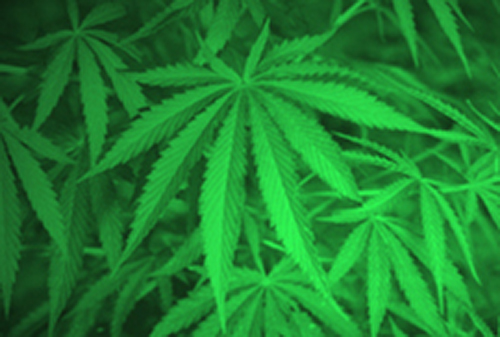
Marketing Director, Ellutia
With debates over the legalization of cannabis and cannabis-derived products raging all over the world, it is time for the cannabis industry to start defining testing standards. With the American Society for Testing and Materials (ASTM) currently in a consultation phase over the “correct way” to test cannabis, the industry is growing up quickly. The industry needs to take its responsibility to its consumers seriously by providing them with a consistent, quality product that carries the reassurance of standardized methods of testing. This article will discuss why cannabis quality control is important how it may be implemented.
The cannabis, hemp, and cannabidiol (CBD) marketplace is constantly evolving as an increasing number of countries begin to have less stringent views on the legalization of cannabis and cannabis-derived products. It is imperative that the skills and knowledge of analytical testing evolve simultaneously with the rest of the industry to ensure the quality and safety of the end products.
I have spoken with many people across the industry—growers, extractors, and consumers—and it is evident that awareness of and desire for testing have grown significantly. There is, however, a lot of confusion about where to begin, what technologies are suitable, and what purposes the results can serve—and whether the results can even be trusted.
Testing falls into two main categories: internal quality control and certification for regulatory compliance. Any testing for regulatory purposes should be conducted independently to avoid potential conflicts of interest, and the competence of the facility performing the test should be independently verified, for example, by ISO17025 certification.
I have heard people ask, “Can this equipment be used to certify our product?” The answer is never a simple yes or no. Although the equipment can meet the analytical requirements of sensitivity and selectivity for the compounds of interest, without independent verification of other factors—such as the validation of methods being used, the calibration of support equipment, and the training and competence of the operators—the results generated cannot be used for legal certification. I would advise anybody sending samples out to testing laboratories to find out what independent certification of competency they hold.
The importance of internal quality control
Although external verified testing laboratories are crucial in the prevention of potential conflicts of interest and the lack of credibility self-certification can bring, in-house quality testing can still bring many benefits. Growers can use in-house testing to monitor plant development, and CBD oil manufacturers can use it to verify the safety and quality of raw materials.
It can be a lengthy and costly process to use external labs. Unfortunately, this results in many companies either not bothering to test or at best facing serious delays to their workflows. This can lead to inconsistent and at worst unsafe products.
Analytical instrumentation that was previously thought to require laboratory experience and a deep understanding of analytical chemistry, is now being used in cannabis testing after relatively little training. There are technologies and instrumentation available that are easy to use, cost effective, and adapted for users with minimal experience.
Gas chromatography, for example, is a widely used analytical tool for cannabis testing. The technique enables potency testing, terpene profiling, pesticide screening, and residual solvent analysis. All these analyses can significantly benefit the cannabis industry.
Types of testing
Cannabis and cannabis products may be subjected to a wide range of tests. Some tests screen for harmful chemicals such as pesticides, herbicides, or residual solvents used in extraction processes; other tests detect microbes such as molds and harmful bacteria; yet other tests determine the levels of terpenes for flavor profiling.
The most common requirement when testing cannabis is the positive identification of the cannabinoids tetrahydrocannabinol (THC) and CBD and quantification of the total THC/CBD ratio, otherwise known as potency. This is important in the recreational and medicinal cannabis markets to ensure that consumers are aware of the potential dose they are consuming. For the CBD market, it is important as many countries will deem any product with more than 0.2% THC to be illegal.
We will now talk through some of the most common technologies used to analyze cannabis and hemp samples for potency.
Liquid chromatography
Liquid chromatography uses a liquid solvent as a mobile phase to carry compounds through an analytical column. As the compounds pass though the analytical column, they are separated into individual compounds. Then these compounds are detected as they exit the column.
For potency testing, a UV detector is the most common. Liquid chromatography is the most commonly used technique in laboratories for potency testing.
The ability to see both acidic and neutral cannabinoids without the need for additional sample preparation combined with the excellent limits of detection make liquid chromatography an ideal choice for commercial testing laboratories.
Gas chromatography
Gas chromatography operates in a similar fashion to liquid chromatography but uses gas as a mobile phase rather than liquid. Most commonly, a flame ionization detector (FID) is used for potency testing. Gas chromatographs operate at much higher temperatures than liquid chromatographs, and the high temperatures can cause the acidic cannabinoids to decarboxylate to the neutral versions. This is not a problem if the user is interested in total cannabinoid values, but if the user wishes to see both acidic and neutral versions, an additional derivatization must take place during the sample preparation. An FID gas chromatograph offers the advantage that the same instrument can also be used for terpene analysis and residual solvent testing. This flexibility makes it an ideal choice for in-house quality testing.
Thin-layer chromatography
Many people become aware of chromatography when they see thin-layer chromatography demonstrated in a science class. They usually see the technique used to separate a dot of ink into individual colors on a piece of filter paper. For cannabinoid testing, the same principal applies. An extracted sample is placed onto a chromatographic plate which is then partially placed into a solvent. Once the separation is complete, the plate is then developed to reveal the different cannabinoids. Each cannabinoid will be displayed as a dot that has travelled up the plate a different distance; the size of the dot will indicate the concentration.
This technique is much more cost effective and requires a lot less equipment compared to other techniques, but it does not give true quantitative results. It is much more suited to giving an indication of levels rather than accurate data.
Near-infrared spectroscopy
Near-infrared spectroscopy can offer nearly instant analysis with the need for very little sample preparation and no requirement for solvents. The technique works by looking at the unique adsorption spectrum of the different cannabinoids. With a higher margin of error when compared to gas or liquid chromatography, this technique is more suited to samples with higher concentrations of cannabinoids as the limits of detection are not really suited for looking at low-level cannabinoids, such as cannabinol (CBN), or for hemp and CBD, where THC levels are expected to be below 0.2%.
Conclusion
If the cannabis industry is to truly prosper, it must bring about substantial change. For example, it must promote education. Companies need to understand how testing can be implemented and the benefits it can bring. Although I support standardizing testing methods and greater regulation, it is important that testing doesn’t become too costly, driving out many of the smaller companies that have helped grow the industry and cannabis community.
One solution lies in low-cost, simple-to-use instrumentation to ensure quality control, such as Ellutia’s 200 Series Gas Chromatograph. It can give companies access to information that helps them improve business decisions, expand, and become more competitive. This in turn, builds consumer confidence and aids market growth.
Andrew James (andrew.james@ellutia.com) is the marketing director at Ellutia.



